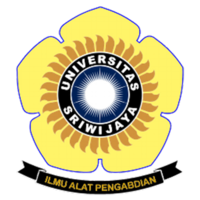Identifikasi Litologi pada Lahan Gambut dengan Penerapan Metode Ground Penetrating Radar di Desa Jati Mulyo
Abstract
Dewi IK, Mashendra K, Putri S, Maulindra Y. 2022. Lithology identification of peatlands by applying the ground penetrating radar (GPR) method in Jati Mulyo Village. In: Herlinda S et al. (Eds.), Prosiding Seminar Nasional Lahan Suboptimal ke-10 Tahun 2022, Palembang 27 Oktober 2022. pp. 166-177. Palembang: Penerbit & Percetakan Universitas Sriwijaya (UNSRI).
There is an infrastructure development on peatlands in Jati Mulyo Village, Dendang District, Tanjung Jabung Timur Regency, so that lithological information is needed below the land surface. For this reason, it is necessary to conduct research with the aim of identifying subsurface using the Ground Penetrating Radar (GPR) method. The Ground Penetrating Radar (GPR) method is one of the geophysical methods that applied propagation of electromagnetic wave. GPR measurements were carried out as many as 3 passes with a track length of 200 meters on peatlands. The result of the response from GPR is in the form of colors that indicate subsurface lithology, The color distribution of the GPR response starts from yellow-red, green, light blue-dark blue colors. Based on the results of GPR measurements on peatlands, a yellow-orange response was obtained which indicates the presence of minerals contained in peatlands. The response of the green color below the surface is dominated by the soil. The response of the blue color indicates the presence of a cavity that is likely to be filled with water in it. From the results of GPR measurements on peatlands, it shows the presence of mineral content near the surface which indicates the mineral content on peatlands. The green color predominates beneath the surface which are sedimentary deposits derived from the Quarter Alluvium (QA) formation including peat soils. The presence of water underground shows that sedimentary deposits, especially peat soils, have large pores that can hold large amounts of water.
There is an infrastructure development on peatlands in Jati Mulyo Village, Dendang District, Tanjung Jabung Timur Regency, so that lithological information is needed below the land surface. For this reason, it is necessary to conduct research with the aim of identifying subsurface using the Ground Penetrating Radar (GPR) method. The Ground Penetrating Radar (GPR) method is one of the geophysical methods that applied propagation of electromagnetic wave. GPR measurements were carried out as many as 3 passes with a track length of 200 meters on peatlands. The result of the response from GPR is in the form of colors that indicate subsurface lithology, The color distribution of the GPR response starts from yellow-red, green, light blue-dark blue colors. Based on the results of GPR measurements on peatlands, a yellow-orange response was obtained which indicates the presence of minerals contained in peatlands. The response of the green color below the surface is dominated by the soil. The response of the blue color indicates the presence of a cavity that is likely to be filled with water in it. From the results of GPR measurements on peatlands, it shows the presence of mineral content near the surface which indicates the mineral content on peatlands. The green color predominates beneath the surface which are sedimentary deposits derived from the Quarter Alluvium (QA) formation including peat soils. The presence of water underground shows that sedimentary deposits, especially peat soils, have large pores that can hold large amounts of water.
Keywords
GPR, peatland, lithology of subsurface
Full Text:
PDFArticle Metrics
Abstract view : 255 timesPDF - 781 times
Refbacks
- There are currently no refbacks.

